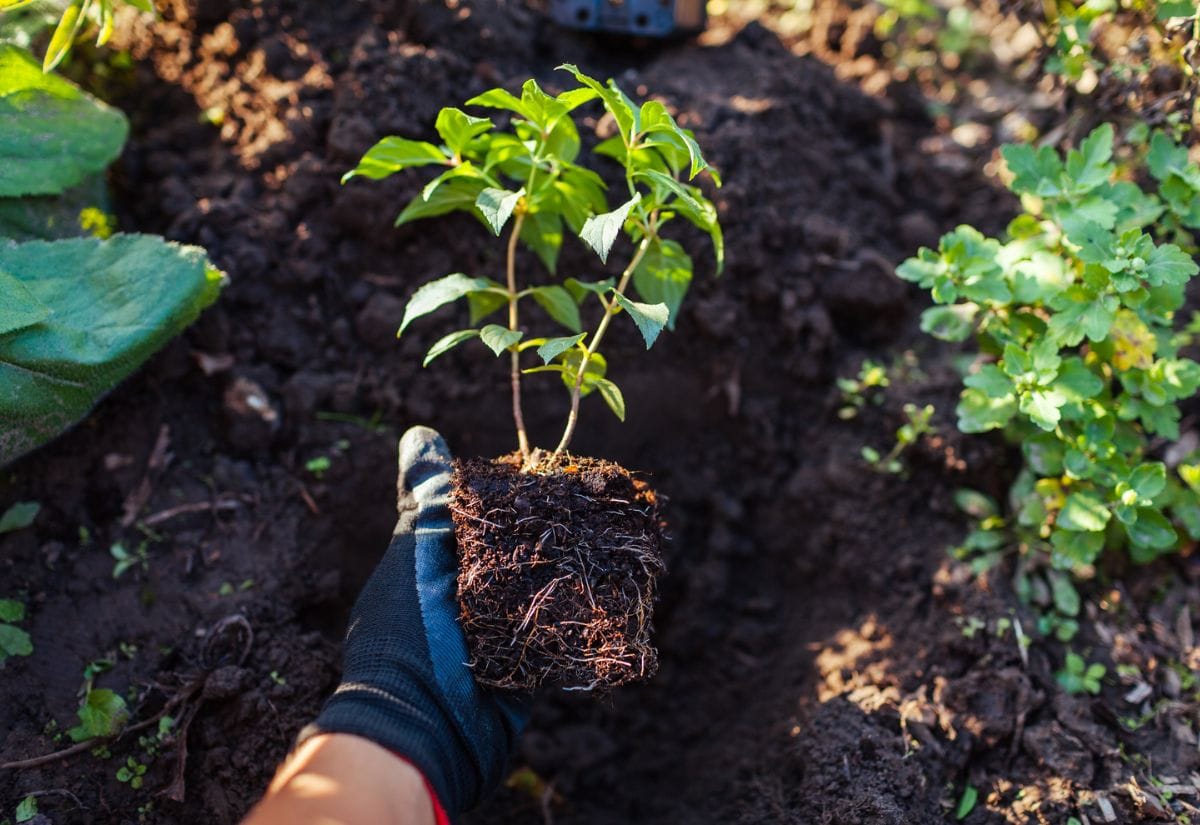
In any natural looking landscape, from urban gardens to the countryside and even large parks, planting hydrangeas means large, showy and colorful blossoms for a long season, and lush, refreshing foliage for most of the season.
Now, let’s talk about getting these beauties into the ground. The perfect time to plant hydrangeas? It’s right now, with fall in full swing!
You might wonder, “Can I plant them at other times?” Absolutely! You can plant hydrangeas from spring through fall, but the timing really depends on your local climate and weather patterns. However, fall is the golden window for planting, closely followed by early spring. Summer? It’s the least ideal time, with spring being a decent runner-up.
Let’s dive into why planting hydrangeas in the autumn gives them a head start over spring planting, and I’ll share some tips on how to give your hydrangeas the best start in their new home – your garden!
Fall Is The Best Time To Plant Hydrangeas: It Is Scientific!
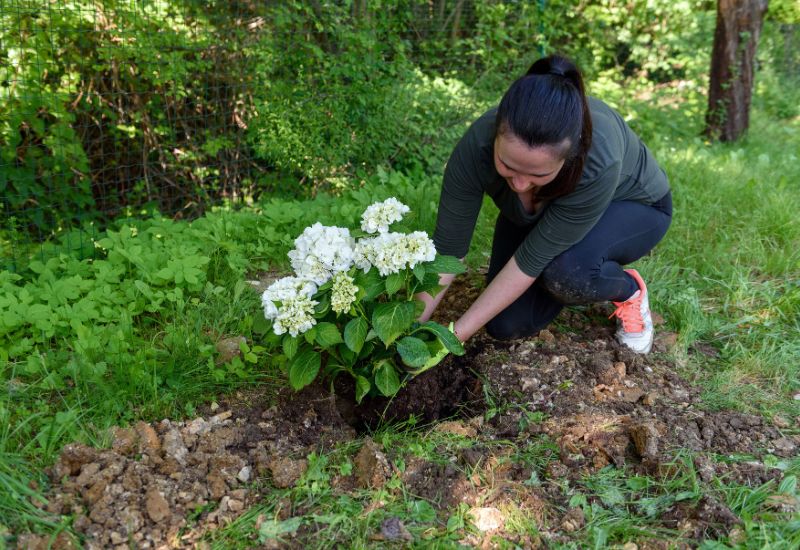
The best time to plant hydrangeas is when they receive the lowest possible stress and they have the longest possible time to settle in. And this will happen on fall!
You can plant your hydrangeas in spring as well, but they will get out of dormancy and start growing in a new home, with new soil, which can be problematic for them.
Roots need to adapt to the new soil consistency, structure and nutrient mix. And they also need to form symbiotic relationships with bacteria and fungi…
As we said, summer is also possible, but on top all the problems your new hydrangea will have in spring, it also has another factor working against it: the heat! Yes, these shrubs like it fresh. And, depending in the variety, it may be in bloom or about to blossom, and this requires lots of strength.
On the other hand, if you plant hydrangeas in fall, you take advantage of their natural life cycle.
Like most other plants, hydrangeas go through three phases:
For this reason…
5 Key Benefits of Choosing Fall Over Spring for Planting Hydrangeas
Planting hydrangeas in fall has many advantages, and here they are:
So, these are the reasons why planting hydrangeas in fall is the best time overall. But this does not mean that this choice doesn’t have its complications or drawbacks.
Issues With Planting Hydrangeas In Fall
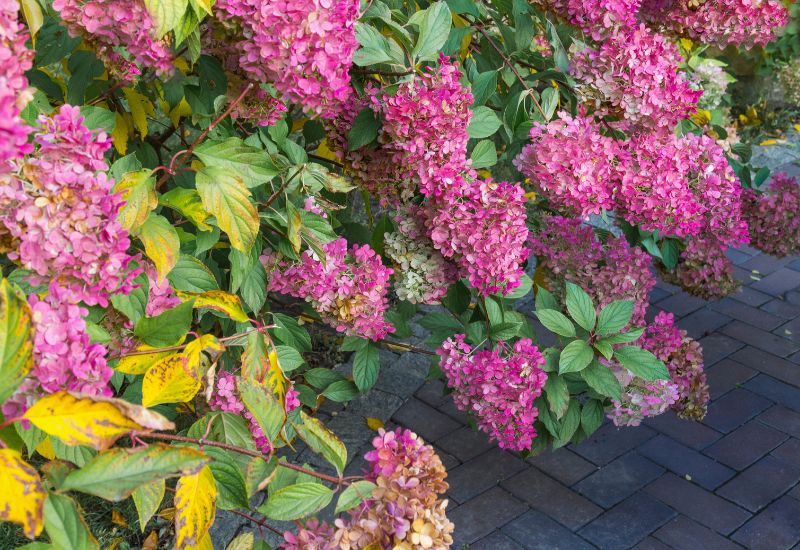
Even if most experts will tell you that fall is the best time to plant hydrangeas, it does not mean that there aren’t any issues involved. And this can also depend on the climate.
Conversely, in warmer and drier climates, planting hydrangeas in fall is by far the best time!
But now, let’s see how you can do it!
Prepare Your Hydrangea For Planting It In Fall
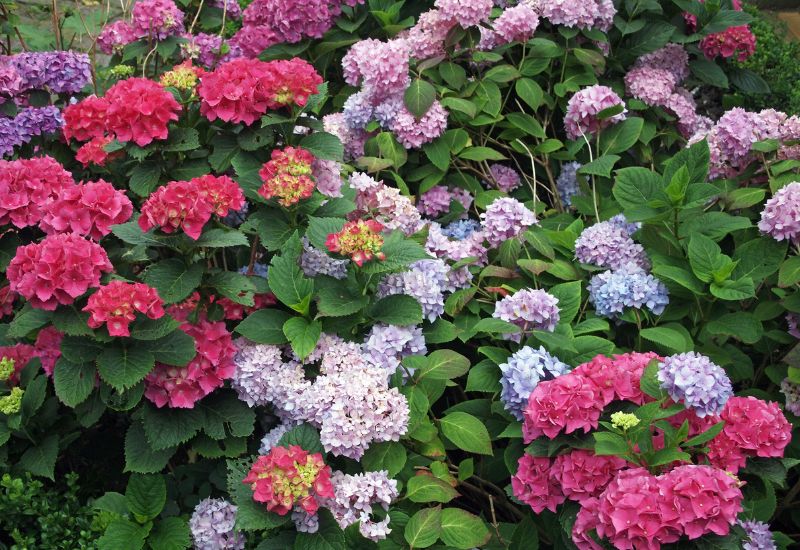
If you buy your new hydrangea from your local nursery, it will already be all set for planting, but in case you get it somewhere else…
And then you need to know if your hydrangea blossoms on new wood (growth from this year, Hydrangea arborescens and Hydrangea paniculata), or on old wood (growth from last year, Hydrangea anomala, Hydrangea macrophylla, Hydrangea quercifolia and Hydrangea serrata).
If you don’t know, play it safe and only cut sick and dead branches!
And now…
Prepare The Soil And Plant Your Hydrangea In Fall
Prepare the soil well before you plant your new hydrangea in your garden, and you will give it the best home to grow and blossom! And, of course, it involves digging! And a tip from me: the best time of the day to plant it is morning or evening…But first of all…
And now, get your spade out, because it is time to start digging!
We have almost finished…
Now Water And Mulch Your Hydrangea And Your Fall Planting Is Done!
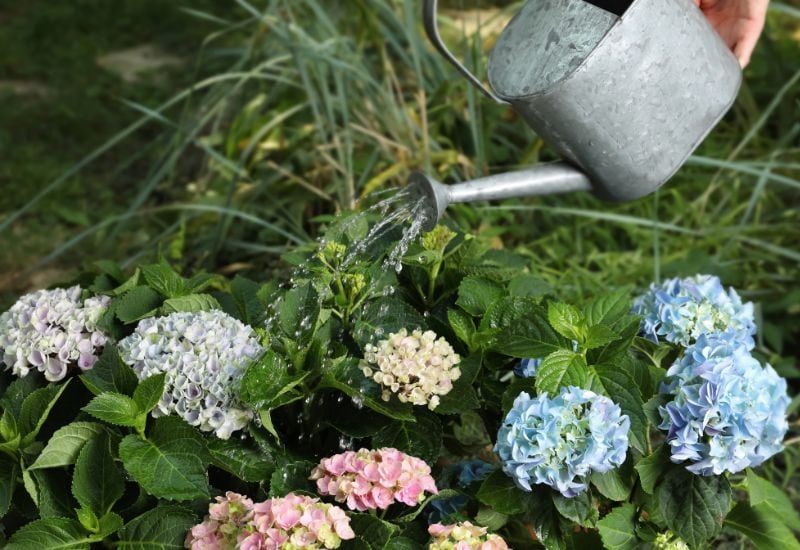
We still have two little steps, and then you can take a rest…
And now you can have a cup of tea…
A Few Fall Planting Myths Debunked
And while you drink your cup of tea, we can debunk a few myths about fall planting…
Planting in fall means the roots are more exposed to the cold. Not really true, in fact, it may be the opposite. Because when you plant hydrangeas or other plants, you often also give them well drained soil.
And it is waterlogged soil that can bring the cold to the roots… Anyway, as long as you are in the right USDA hardiness zone, they will survive, especially if you mulch.
Planting in fall with no leaves is like planting a “dead” perennial or shrub. This is not true as well, even during dormancy, your hydrangeas are still alive, so, they won’t just rot away in the soil as if you put a dead shrub in the soil.
Planting in fall puts stress on hydrangeas. It is the opposite; in fact, they are going dormant, and the contrary is true, planting when it is too hot causes them to lose more water than they can absorb…
Some Personal Insights From Gardeners About Planting Hydrangeas In Fall
I am not the only gardener who prefers to plant hydrangeas in fall, but I will tell you another reason about myself.
It may look like a small thing, but if I do it in fall, I already have them in my garden in spring… And what does it mean? Two things:
But there are other professional gardeners who like to plant hydrangeas in fall, like Kaleb Wyse, who even starts in “late summer early fall” or “as soon as you see slight changes” in the weather, and he doesn’t even prune them… That shows you how strong they are!
And if this wasn’t enough, you could do as Kelly Lehman does, who mixes the soil straight in the hole she has dug for het hydrangeas…
And with their words, I leave you to plant your hydrangeas in your garden now, before fall is over!

Written By
Adriano Bulla
After many years as an academic in London, Adriano Bulla became a writer, publishing books like A History of Gardening, Organic Gardening and Elements of Garden Design; he then decided to become a gardener, following his childhood dream, and has been following his dream writing and gardening professionally in Southern Europe, where he has specialized in new and innovative organic gardening fields and techniques, like permaculture, regenerative agriculture, food forests and hydroponics.
